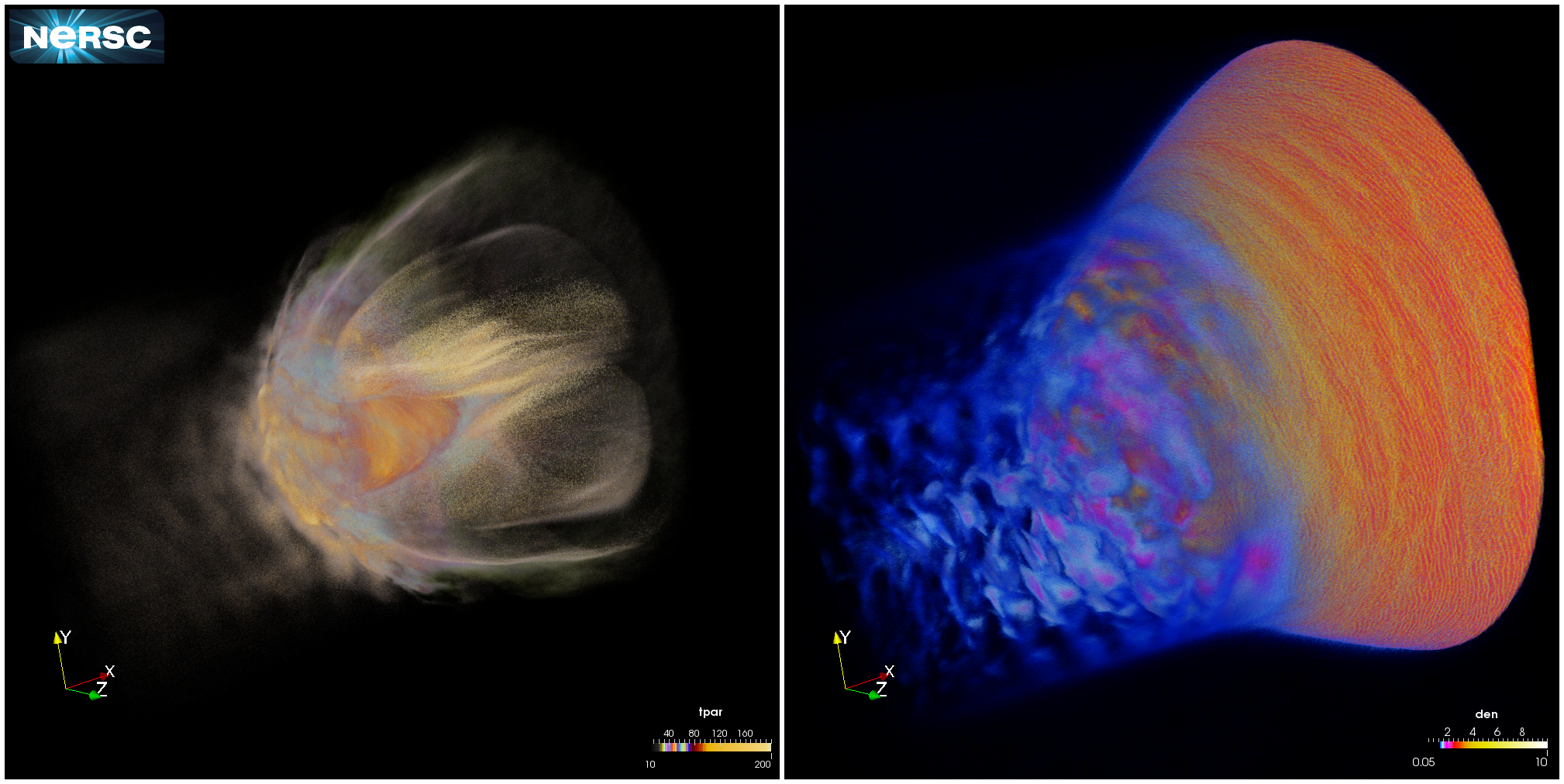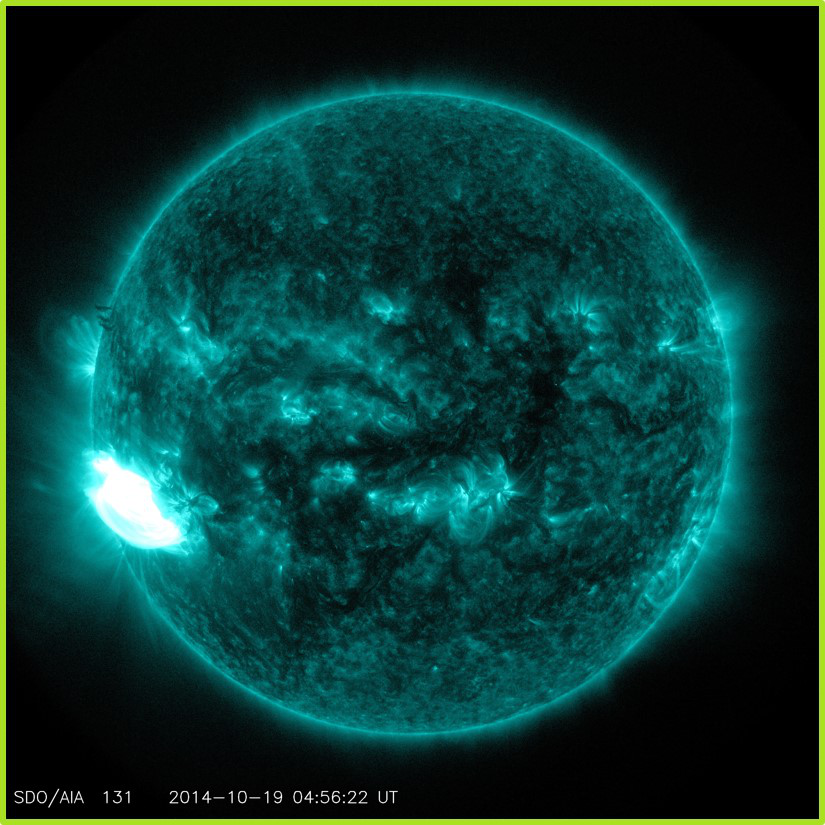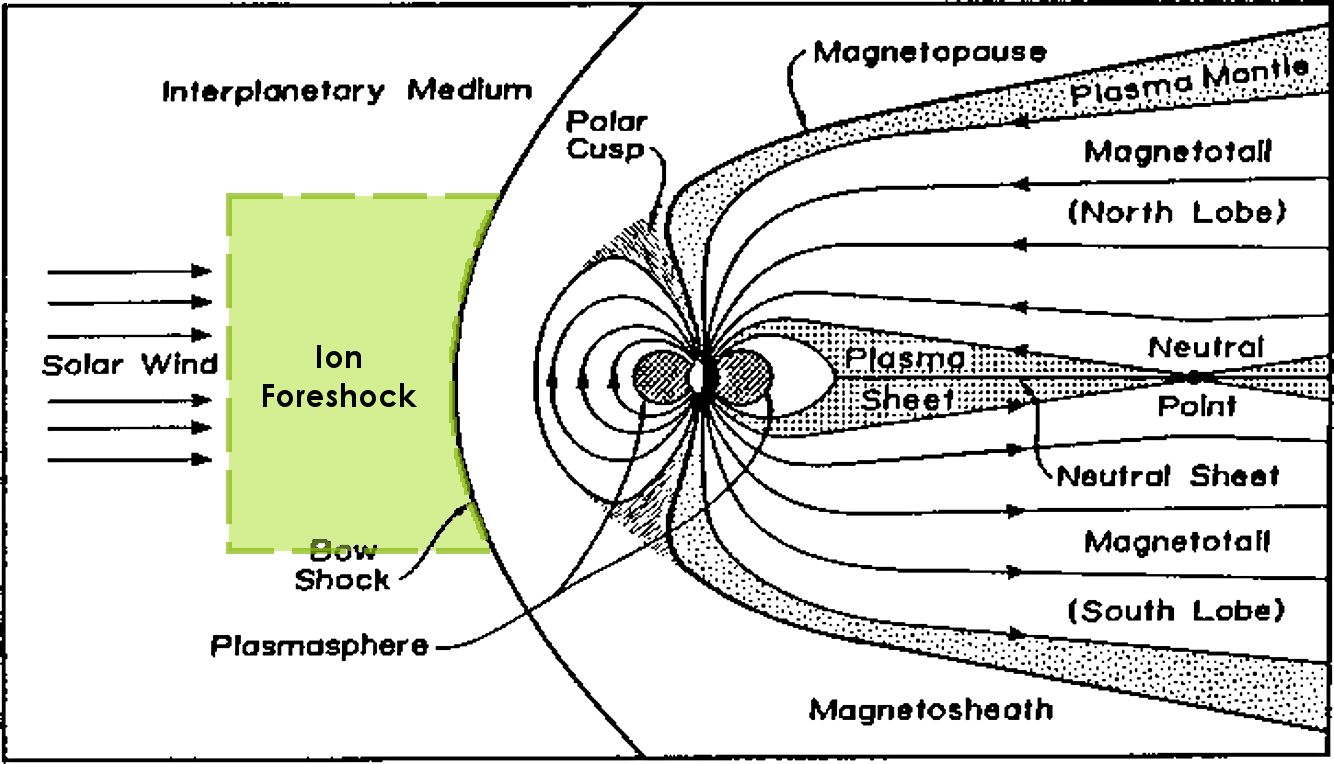The Link Between Shocks, Turbulence, and Magnetic Reconnection
in Collisionless Plasmas
Burlen Loring
January 30, 2015

Figure 1: Volume renderings of temperature, a proxy for ions, and density show ions reflected from
the bow shock leading to wave formation in the ion fore-shock. The wavefronts are advected back
into the shock, which in turn drives slow large amplitude structures(SLAMS), ultra-low frequency
(ULF) waves, and jets. All of which can have significant impact on the Earth’s upper atmosphere.
Problem Statement and Goals

Figure 2: A massive solar flare narrowly
missed the Earth in 2012. Space weather poses a serious threat to our
society which is increasingly reliant on technological systems that are easily
damaged by solar storms. For example our power grids and communication and GPS
satellites are all susceptible. On September 1 and 2, 1859 the largest solar storm on record
occurred, damaging telegraph systems and creating aurora as far south as the
Caribbean. On March 13, 1989 a much smaller storm caused a catastrophic
collapse of the entire power grid in Quebec and widespread blackout along east
coast of U.S. Dangerous There is a 12% chance in the next 10 years of a solar
storm of the magnitude of the 1859 Solar super-storm hitting the Earth. It is
estimated that such a storm would cause over $2 trillion in damage. Storms can
occur even during “very quiet” portion of a modest solar activity
cycle. Our society narrowly averted on 23-24 July, 2012 (by a margin of 7
days) a geomagnetic storm as large as the 1859 super-storm.
Implementation and Results

Figure 3: The Ion fore-shock region. This research leverages petascale simulations of the Earth’s magnetosphere to study the physics and
dynamics of space weather phenomenon. A radial interplanetary magnetic field(IMF) configuration
was studied. Such configurations are common during high intensity solar storms when the
solar wind becomes highly turbulent. In this configuration the ion-foreshock was seen to be
highly active. The ion fore-shock is a region in the solar wind magnetically
connected to the Earths bow shock where ions with a range of energies streaming against the
solar wind flow, generate instabilities and perturbations that ultimately affect the Earths
magnetosphere.
The study is based upon one of the largest global simulations of the Earths magnetosphere ever made.
The simulation ran on 150,000 cores for 368 hours, for a total of approximately 55.2 Million core hours.
The fields and derived quantities are kept on a 1024x2048x1024 grid, and 1 Trillion Particles were
simulated. The simulation produced more that 128 TB of analysis data. The NERSC DAS group applied
parallel visualization and analysis techniques using ParaView, VTK, and POVRay. Including interactive
and batch volume rendering on Edison using ParaView on 256 cores, and batch mode ray tracing using
POV-Ray on 36,000 cores.
Impact
The Earth is much more exposed to space
weather effects than previously thought. Analysis of the simulation data
revealed many unexpected results. For example unforeseen phenomenon originating
from the ion fore-shock such as Jets, Sunward flow, shocklets, and Short Large
Amplitude Magnetic Structures were located and analyzed. The analysis showed
marked differences in dynamics compared to recent 2d simulations. Volume
rendering revealed helical 3d wavefronts forming as the reflected ions are
picked up by the solar wind, which persists for long times and break down into
more turbulent waves which are advected into the bow shock. These waves can
then penetrate bow shock and propagate throughout the magnetosphere, extending
all the way to the magnetotail.
This work is being prepared for publication.
|